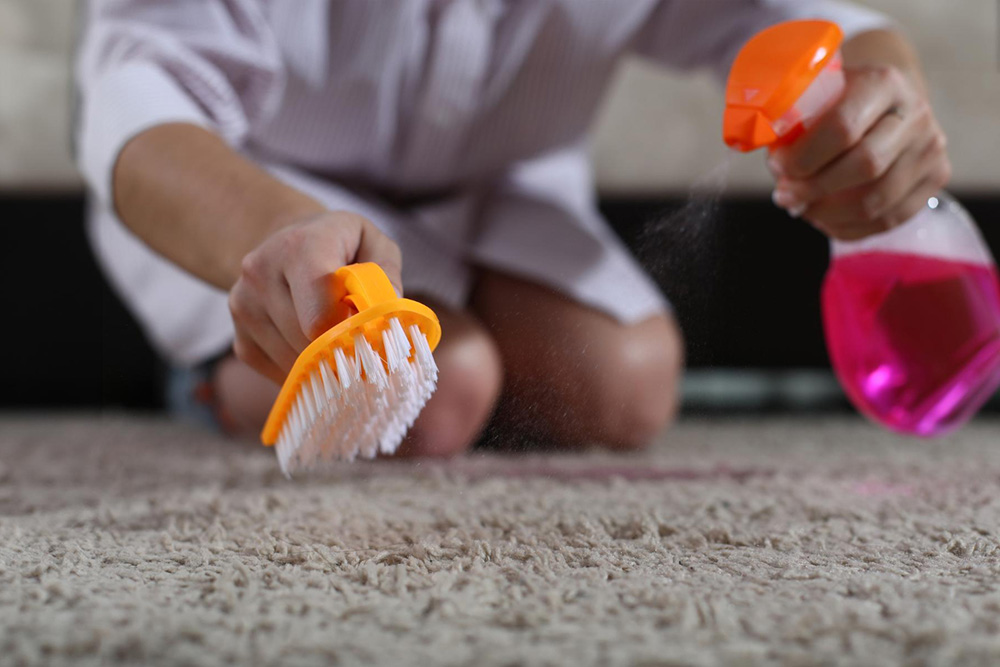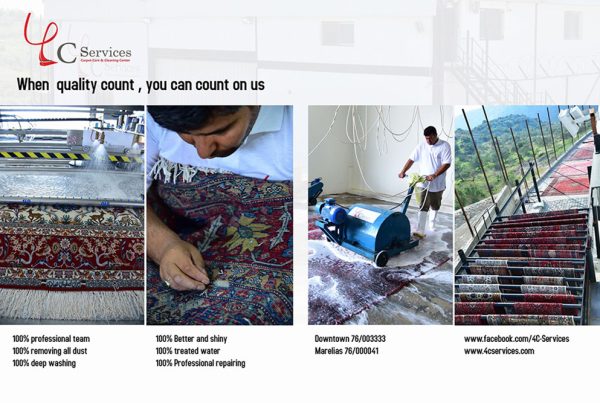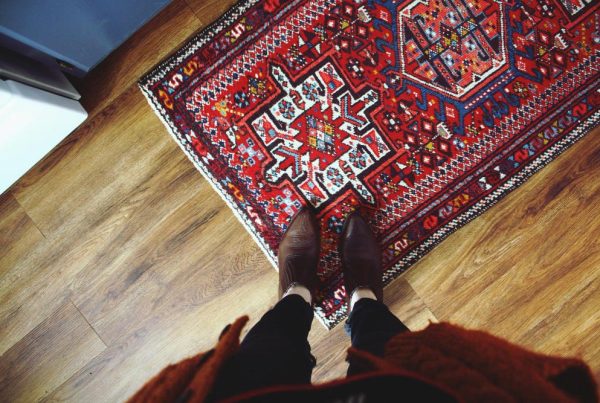Persian and antique rugs are more than floor coverings—they are woven records of artistry, heritage, and family history. Cleaning them correctly requires deliberate steps, fiber-aware chemistry, and careful handling. This guide outlines the best, expert-approved carpet cleaning methods that protect natural dyes, respect traditional construction, and help your rug age gracefully. Whether you live in a busy apartment in Beirut or a spacious home elsewhere in Lebanon, these principles will keep your heirlooms safe and beautiful.
Start with Inspection and Testing
Every successful cleaning begins with a structured assessment. Persian and antique rugs—hand-knotted wool, silk, cotton, or mixed fibers—vary widely in dye stability, knot density, and foundation tension. A thorough inspection should include:
- Fiber identification: Wool and silk behave differently from cotton and viscose.
- Construction review: Hand-knotted vs. machine-made, flatweave vs. pile, presence of glued backings.
- Colorfast test: Carefully blot inconspicuous areas with a damp white cloth and cool water. If dye transfers, create a plan to stabilize colors before washing.
- Structural check: Look for weakened warps/wefts, curling edges, and fringe loss that might worsen if not stabilized.
Documenting the rug’s condition at the outset prevents surprises and guides a safe, targeted cleaning method—especially important for valuable pieces in Lebanon with natural or vegetable dyes.
Dry Soil Removal: The Foundation of a Safe Clean
Before any moisture touches the rug, remove as much dry soil as possible. Embedded grit acts like sandpaper against fibers, dulling color and accelerating wear.
- Differential dust extraction: Use controlled vibration or air dusting to lift particulate from the foundation.
- Vacuum technique: For delicate pile, use suction-only (no beater bar) and go with the nap to avoid fiber stress.
This stage alone can dramatically brighten colors and reduce cleaning time—the first “best practice” any expert will recommend in Beirut or beyond.
Choose the Right Wash Method (and When Not to Wash)
The best method depends on fiber type, dye stability, and structural health. When in doubt, err on the side of gentler techniques and professional oversight.
1) Controlled Hand Wash (Best for Most Persian & Antique Rugs)
- pH-balanced solutions: Use chemistry formulated for wool and silk to preserve natural oils and sheen.
- Low agitation: Hand tools and gentle grooming minimize stress on pile and knots.
- Cool water: Helps protect fugitive dyes and maintain dimensional stability.
2) Full-Immersion Wash (Expert-Only Scenario)
- When appropriate: For sturdy, color-stable rugs that need deep flushing of soils and contaminants.
- Safeguards: Pre-stabilize dyes, monitor dwell times, and ensure rapid, balanced rinsing.
3) Low-Moisture & Topical Methods (Situational)
- Spot cleaning: For isolated spills, treat with dye-safe agents and minimal moisture.
- Encapsulation: Use sparingly; not a substitute for proper washing on fine, hand-knotted pieces.
Remember: some antique or fragile textiles should not be “wet washed” at all until structural issues are stabilized. An expert assessment is vital in Lebanon, where humidity and coastal conditions can complicate drying.
Expert Stain Treatment: Precision Over Power
Stains on Persian and antique rugs require patience and chemistry discipline—never scrubbing. The top expert approaches include:
- Protein stains (food, pet): Use enzyme-compatible, dye-safe products with controlled dwell times.
- Tannin stains (tea, coffee, wine): Apply tannin-targeted agents and rinse thoroughly to prevent wicking.
- Oils and grease: Pre-treat with suitable solvents or emulsifiers designed for wool/silk before the main wash.
- Color-run correction: If dyes have migrated, trained pros can reduce bleed using specialized processes—best handled by a workshop with conservation experience in Beirut.
Silk & Delicate Fibers: Special Handling
Silk pile or highlights demand the most conservative approach. Keep water cool, agitation low, and drying quick but controlled. Silk is sensitive to alkalinity and prolonged moisture, which can cause loss of luster or texture changes. A skilled cleaner will groom silk with soft tools to restore natural sheen without leaving residues.
Rinsing, Drying, and Grooming: The Invisible Differentiators
Even the best washing fails if rinsing and drying are not expertly managed. Aim for:
- Thorough rinse-out: Remove chemistry and soils completely to avoid re-soiling and stiffness.
- Balanced water extraction: Remove bulk moisture without distorting the foundation.
- Controlled drying: Use directed airflow and moderate temperatures. Block the rug to shape if needed so borders and corners lie flat.
- Final grooming: Align pile with light brushing to restore clarity and pattern definition.
Preventive Care That Extends Time Between Cleans
The best cleaning plan includes smart prevention, especially in high-traffic homes across Lebanon:
- Rug pads: Choose breathable pads appropriate for marble, tile, or wood to reduce slippage and friction.
- Rotation: Turn rugs a quarter turn every few months to even out UV exposure and foot traffic.
- Sun management: Use sheers or UV-control film to slow fading—important in bright, coastal areas near Beirut.
- Vacuuming: Suction-only on delicate pieces; avoid aggressive beater bars.
- Spill response: Blot—never rub—with a clean, white cloth; then consult a professional for lingering residues.
When to Call an Expert
Consider professional help when you notice persistent odors, visible dye transfer, heavy soiling, moth damage, curled edges, or structural weakness (splits, missing knots, exposed warps/wefts). An expert workshop with conservation-minded processes is your safest route for significant Persian and antique pieces in Beirut and throughout Lebanon.
Key Takeaways
- Test first: Colorfast testing and structural checks guide safe decisions.
- Remove dry soil: Dust extraction is the single best pre-wash step for clarity and fiber protection.
- Match method to rug: Hand wash, immersion, or low-moisture each have a place—used judiciously.
- Prioritize rinsing and drying: Residue-free, controlled drying preserves feel, color, and structure.
- Preventive care matters: Pads, rotation, sunlight control, and correct vacuuming extend results.
Disclaimer
The guidance above is educational and applies generally to Persian and antique rugs; individual pieces vary. Always perform colorfast tests in inconspicuous areas and avoid harsh chemicals or aggressive agitation. For valuable or fragile textiles, consult a qualified professional before attempting any cleaning at home.



